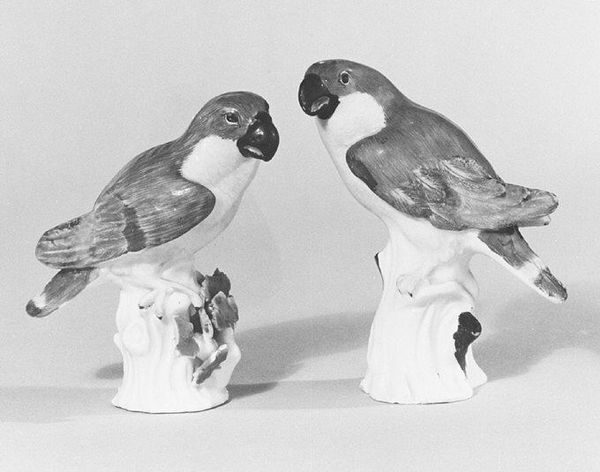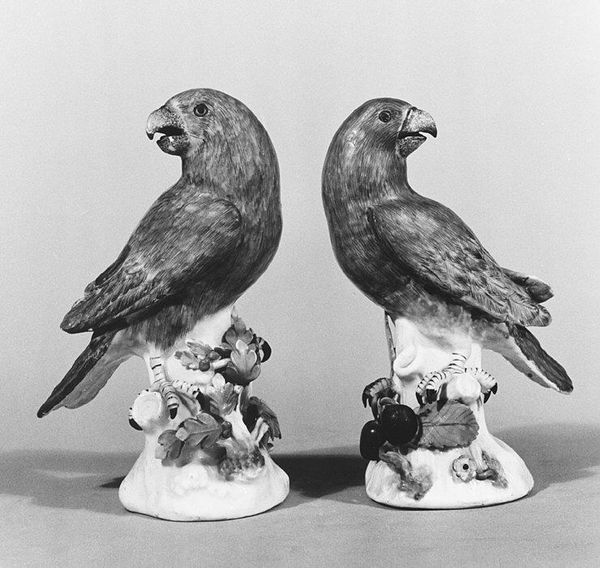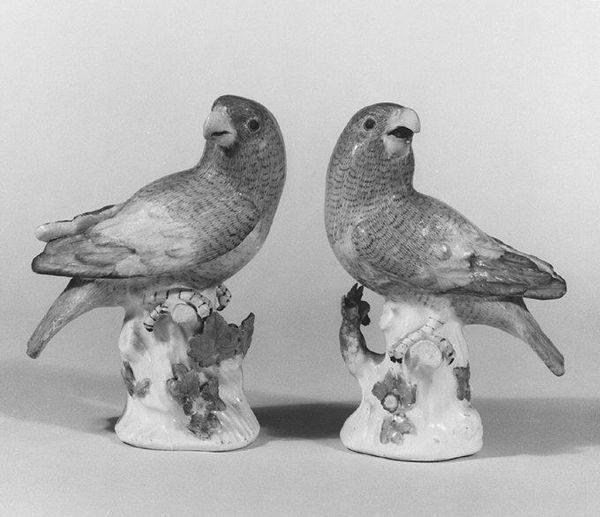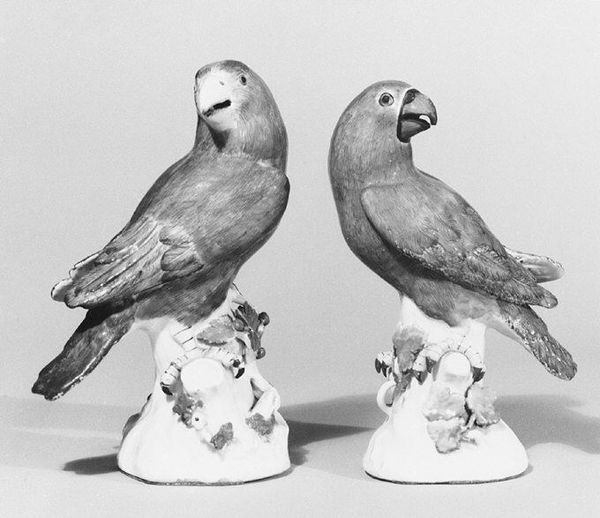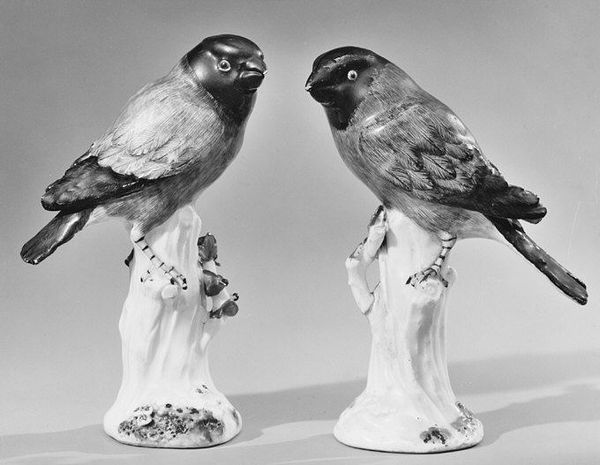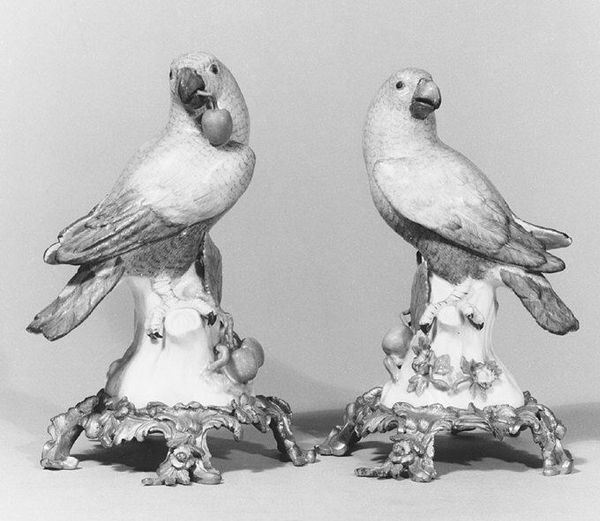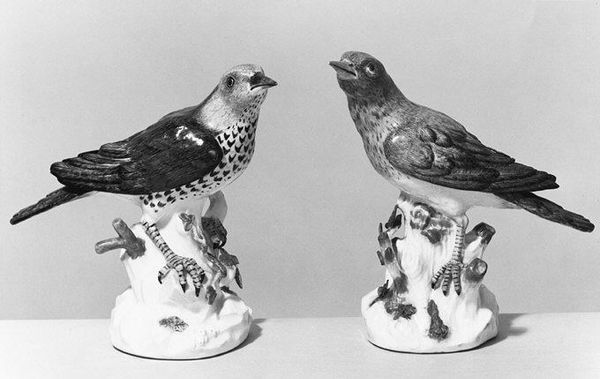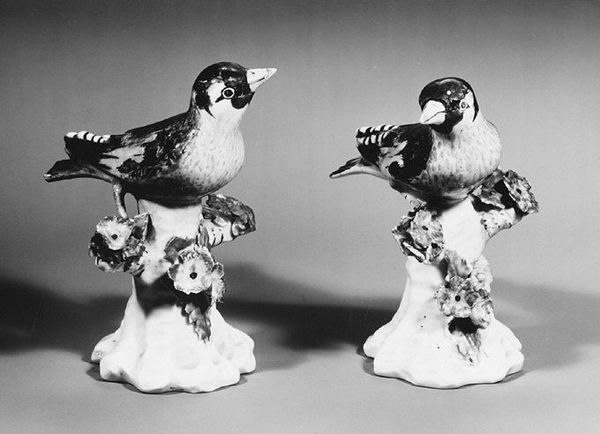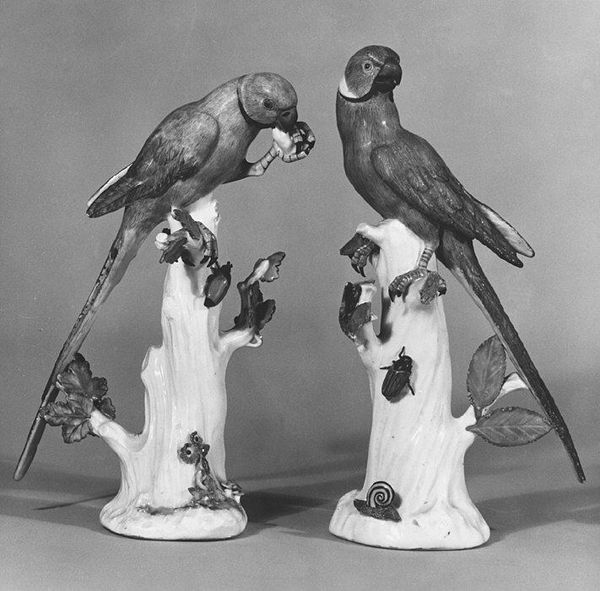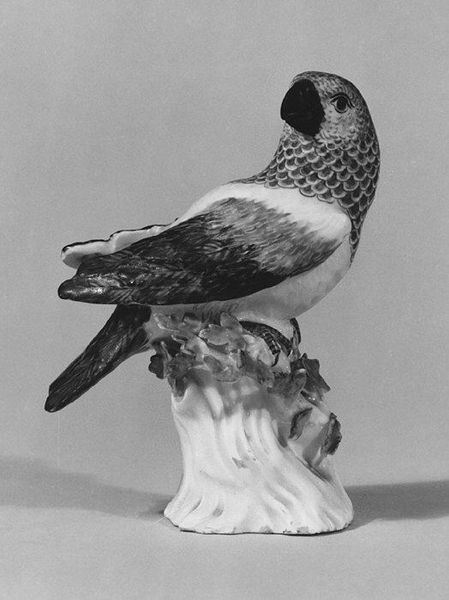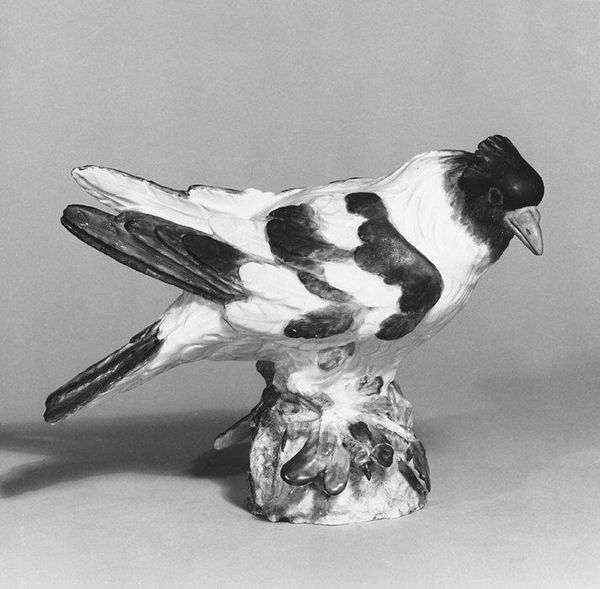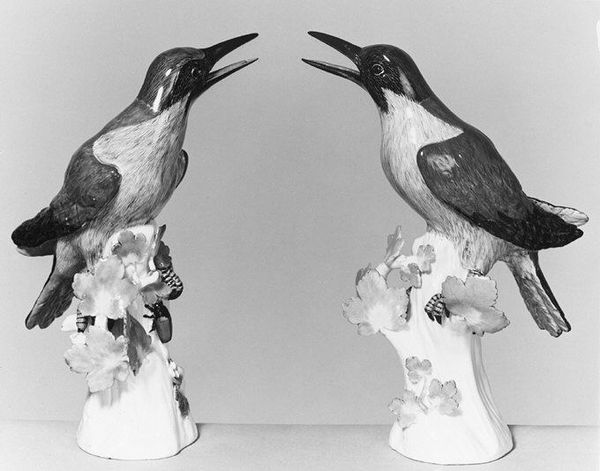
ceramic, porcelain, sculpture
#
ceramic
#
bird
#
porcelain
#
sculptural image
#
black and white theme
#
sculpture
#
decorative-art
#
rococo
Dimensions: Height: 5 1/4 in. (13.3 cm)
Copyright: Public Domain
Curator: These delicate figurines, dating from 1735 to 1745, are titled "Goldfinch (one of a pair)" and were created by the Meissen Manufactory. They are beautiful examples of Rococo porcelain sculpture. What strikes you first about them? Editor: Their stillness, actually. They seem frozen in time, embodying a sense of arrested beauty. The monochrome presentation emphasizes form and texture, like classical statuary re-imagined. I find this slightly unsettling. Curator: That unsettling feeling, I suspect, is linked to their original function within courtly culture. Meissen porcelain was deeply implicated in displays of wealth and power. Imagine these birds as elements of an elaborate table centerpiece, proclaiming the owner's refined taste and global reach. Editor: So, it’s not just art for art's sake, but a performance of privilege. What about the Goldfinch itself, was that symbolic in any way? Birds often carry heavier cultural meaning than we realize. Curator: Precisely. Goldfinches were often associated with the Passion of Christ, due to the myth that they pulled thorns from his crown. However, in a secular context, such as here at Meissen, they might represent merely beauty or refinement, signaling a separation from religious spheres. They mark wealth and status. Editor: Which further alienates them, I feel. To take something inherently free – a bird – and transform it into an object of consumption… I'm struck by the tension between the naturalism they strive for and the artifice they embody. Are they free? Or are they decoration, commodities made to sit pretty for a privileged few? Curator: That tension is absolutely central. Meissen thrived by mimicking nature with industrial precision. Examining its historical and cultural context makes you realize it reflects not only artistic skill, but also complex hierarchies of power and the emergence of consumer culture. Editor: Right, understanding that these were not just beautiful objects, but emblems in a bigger narrative, provides a deeper perspective than merely aesthetic appreciation ever could. Curator: I agree, it gives you so much more to think about. Editor: Exactly!
Comments
No comments
Be the first to comment and join the conversation on the ultimate creative platform.

